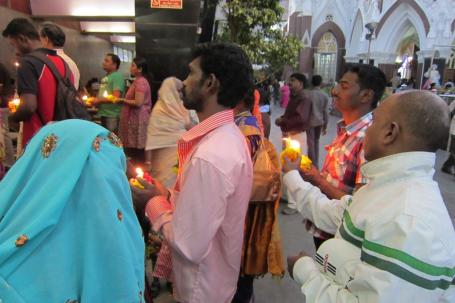Readings describe local Catholic communities in Africa, Asia, Latin America, Europe, and elsewhere. The course is organized according to special topics that illuminate processes of globalization and localization: worship and inculturation; Catholic Charismaticism and healing movements; gender and family; conversion and interreligious encounters; saints and sanctity; and liberation and struggles for social justice. Throughout the semester, we return repeatedly to the question of how Catholicism can be both a local culture and a global system.
Follow Marc Loustau's blog for a weekly review of lessons, readings and resources, as well as the author's impressions as a first-time teacher of global Catholicism of what worked and what didn't in the classroom.
Lessons in this Group
- Week 1: What do you think of when you think of “global?”
- Week 2: How do you teach the basics of Catholicism to a group of Catholic students? (Part 1)
- Week 2: Festas and demographics
- Week 3: Gender and life-cycle solutions
- Week 4: Who is present for the Inculturated Mass?
- Week 4: What comes to mind when we say “the globe?”
- Week 5: Teaching All Souls’ Day, church/state issues, and the politics of changing rituals
- Week 6: Would you recommend funding Mercy House?
- Week 8: Driving while Charismatic
- Week 9: Kudagama: From pilgrimage site to Charismatic 'hot-spot'
- Week 10: Vatican II's grassroots
- Week 12: Replicated shrines and the 'devotional capital' of pilgrimage
- Week 13: Sensuous descriptions
- Week 14: Public and Pentecostal schools
- Week 15: Reprising a brainstorm
- Mixed reflections on weekly reflection assignment
